International Polychaete Day Feature Series III
Biofouling polychaetes research
This week’s feature on polychaete research at the St John’s Island Marine Laboratory (SJINML) continues on the subject of tubeworms but with a twist, literally and figuratively ― we introduce the biofouling spiral tubeworms known as spirorbins.
Tubeworms actually refer to polychaetes from the family Serpulidae, which include the species Spirobranchus kraussii from last week’s Feature Series II and the spirorbins that we will talk about today. Last week, we shared about their special ability to build hard calcareous tubes that encase their soft bodies. The tubes are important protective structures against predators and also desiccation when the tubeworms are out of water, for example during low tides.
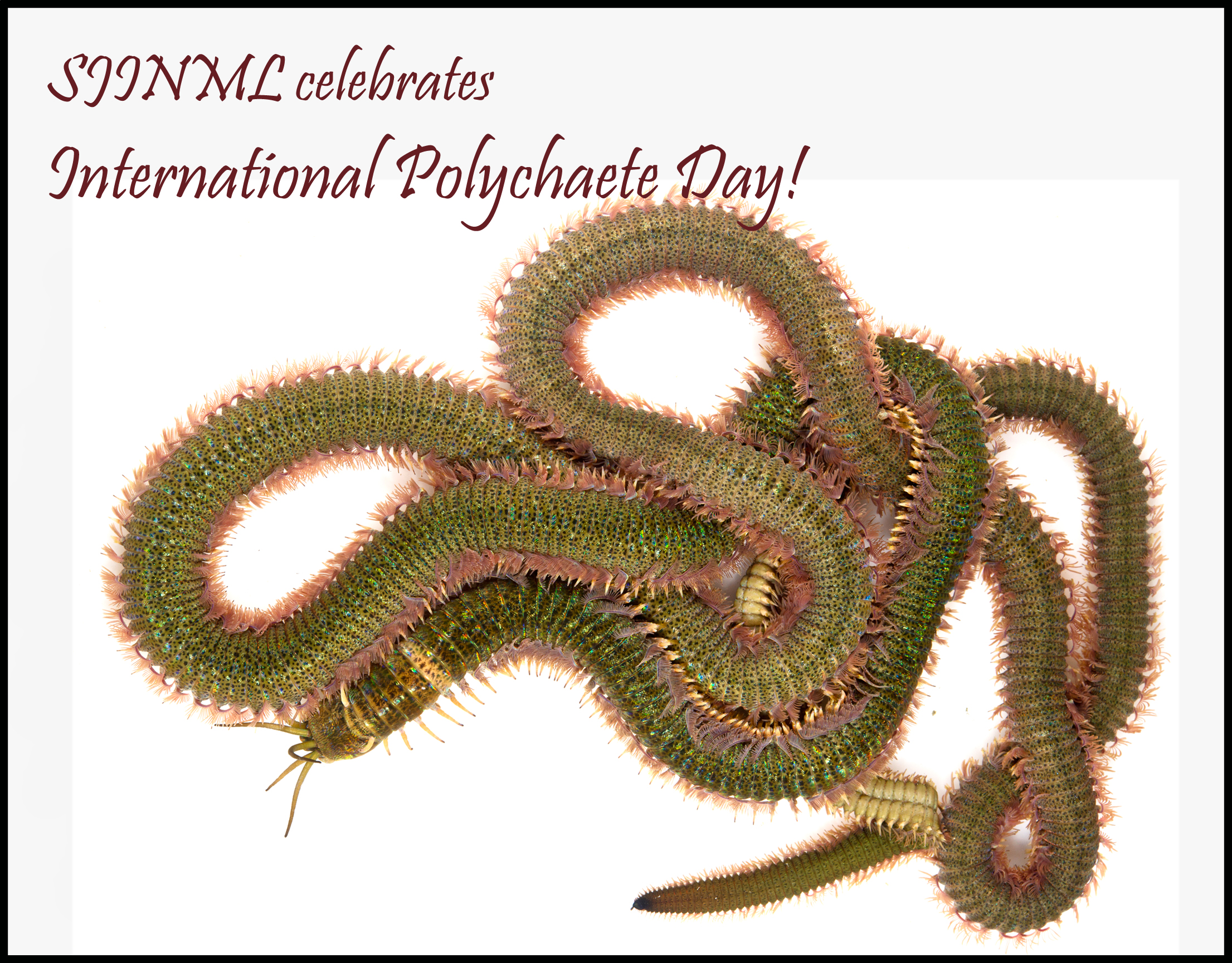
However, certain species of Serpulidae form dense aggregates of calcareous tubes on ship surfaces and cause biofouling, a problematic phenomenon for ship operators worldwide. Biofouling happens when biological organisms (e.g. barnacles, mussels, tunicates) attach to and accumulate on surfaces immersed in seawater (e.g. ship hulls). They greatly increase the frictional resistance experienced by sea-going vessels, thereby compromising speed and increasing fuel consumption. As a result, ship operation costs increase.
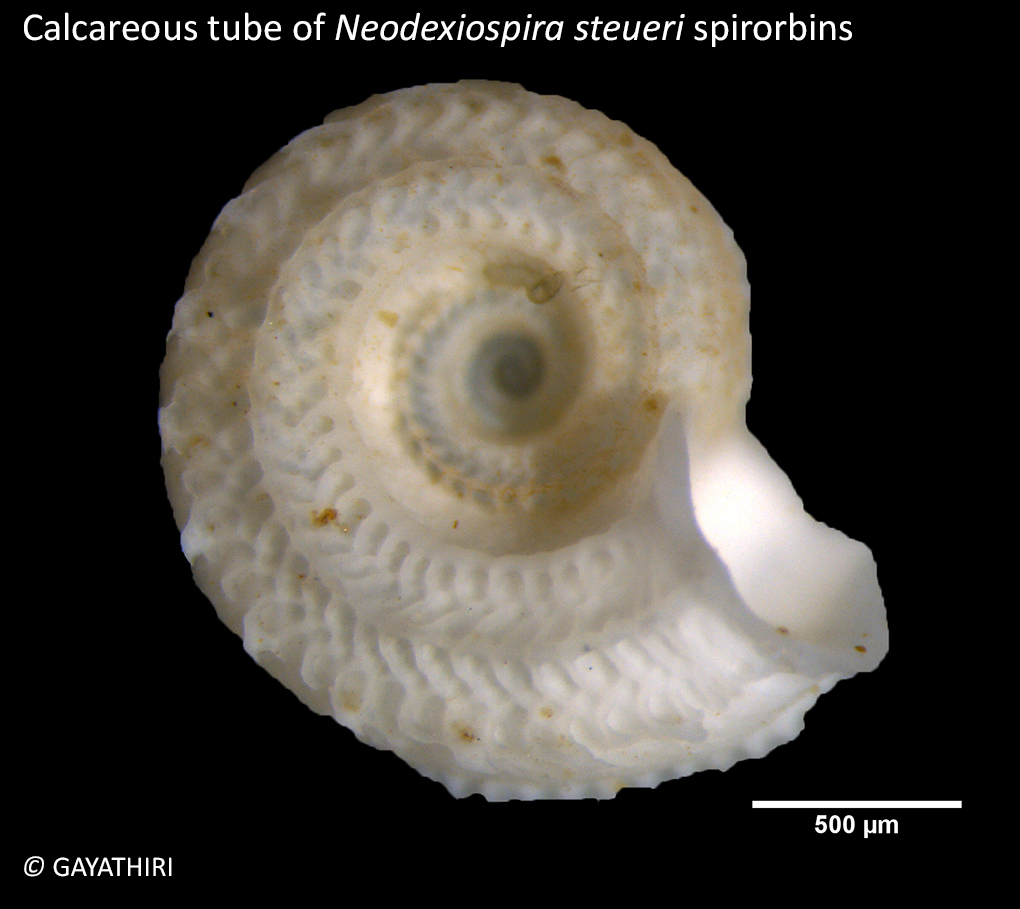
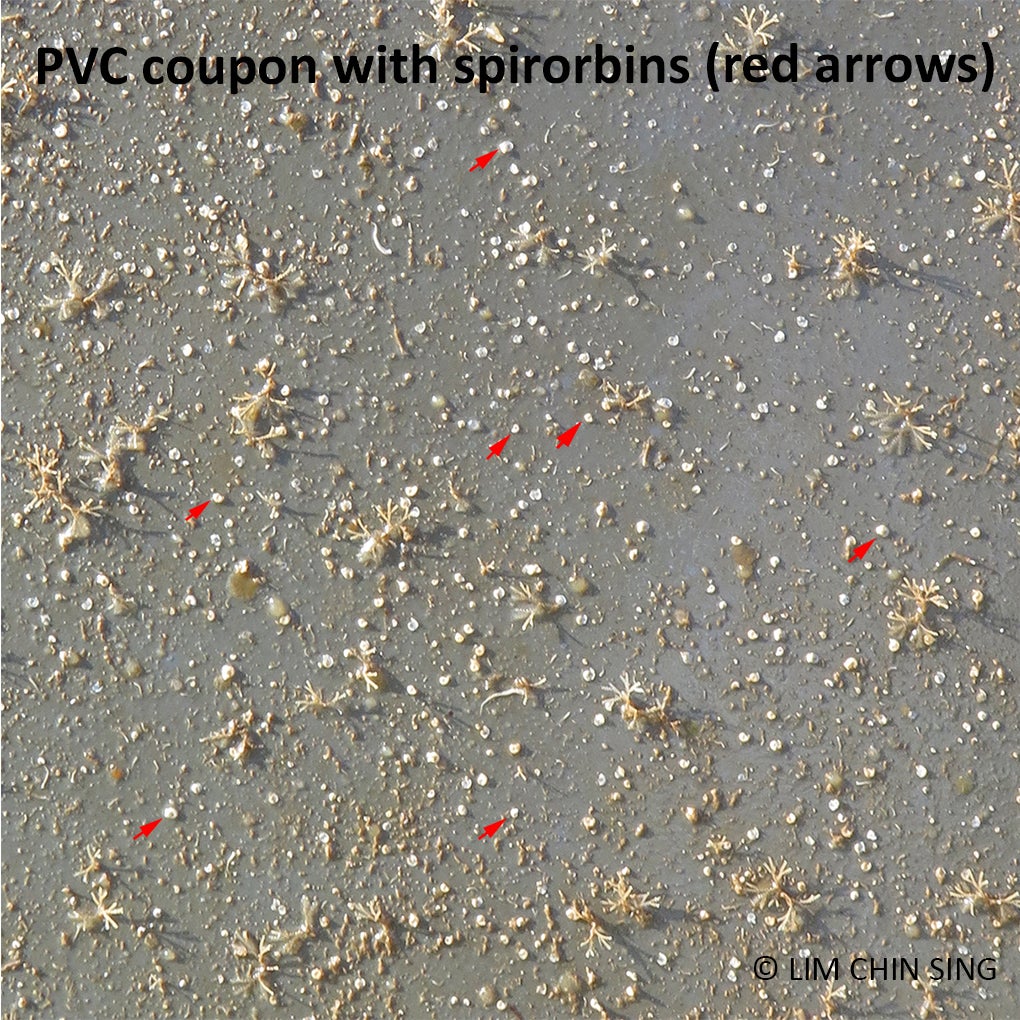
Over the past year at SJINML, we have been studying a subfamily of serpulid tubeworms known as spirorbins in relation to biofouling. They are typically seen in the early stages of fouling progression, when they rapidly colonise surfaces immersed in seawater. Spirorbins can be commonly found and collected from artificial substrates at our local test site for anti-fouling panels, the Republic of Singapore Yacht Club (RSYC). They are often the first visible macrofoulers on newly immersed substrates. During high recruitment periods, up to 80 individuals of spirorbins can be found within an area of just 25cm2, an area not larger than a Meiji cracker biscuit!
They secrete and inhabit spirally coiled calcareous tubes, which usually attain a maximum diameter ranging between 1.5 to 2mm. Yes you read it right ― a maximum tube diameter of 2mm! Indeed, spirorbins are very small animals, but with their interesting suite of characters, they are certainly nothing short of amazing. In general, spirorbins as a group are relatively less well-studied when compared to other serpulid polychaetes likely due to their small body size.
Spirorbins as well as many other serpulid polychaetes have a special structure called the operculum. It is found at the emergent end of the body. When the body withdraws into the tube, the operculum seals off the tube much like a bottle stopper! It serves a protective function against predators and helps to prevent the body from drying out during low tide.
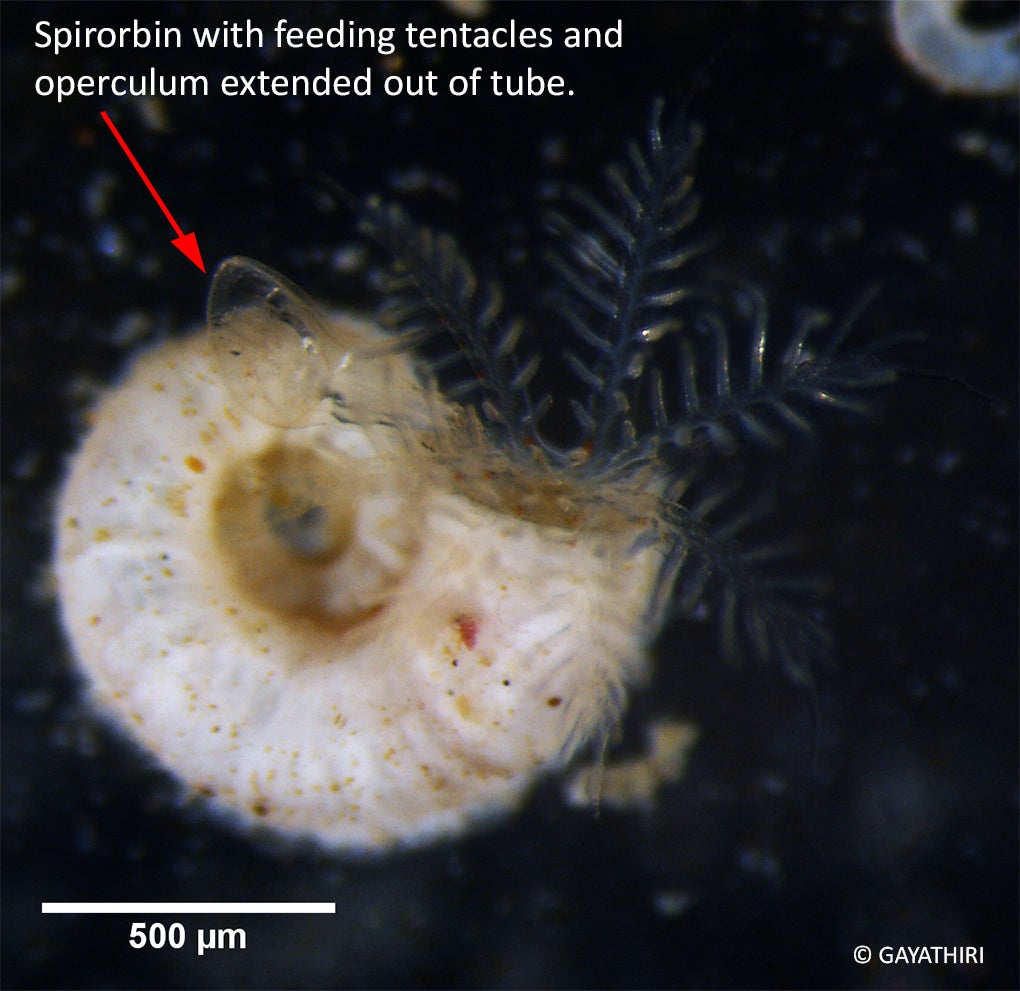
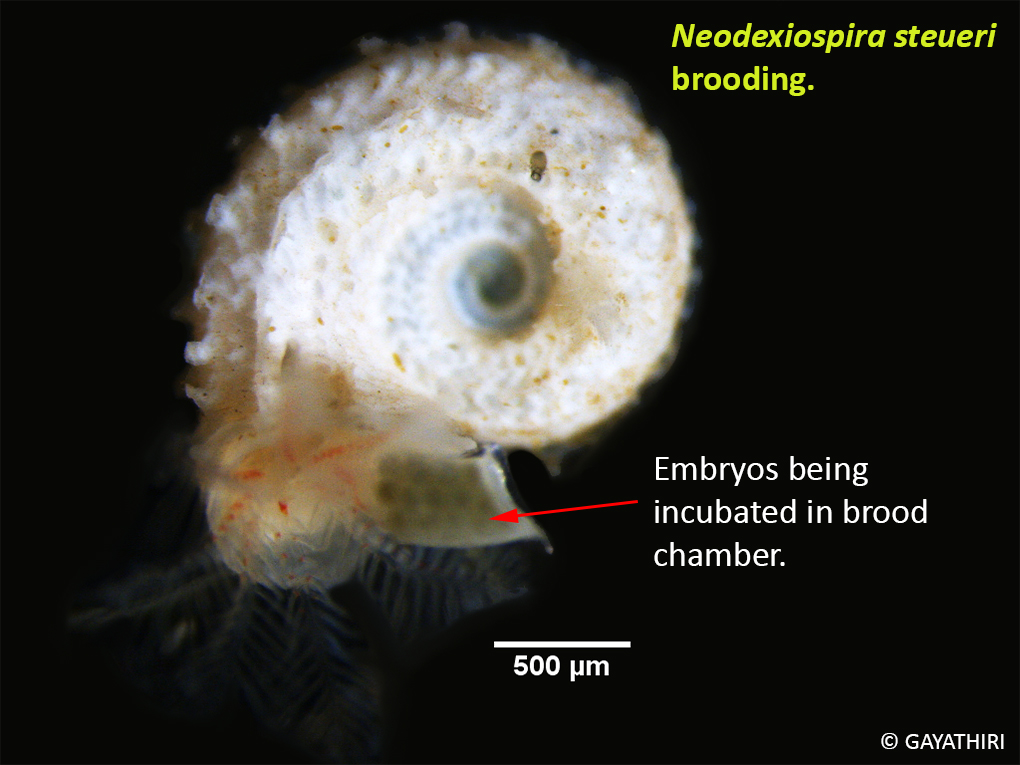
Over the past year at SJINML, we have been studying a subfamily of serpulid tubeworms known as spirorbins in relation to biofouling. They are typically seen in the early stages of fouling progression, when they rapidly colonise surfaces immersed in seawater. Spirorbins can be commonly found and collected from artificial substrates at our local test site for anti-fouling panels, the Republic of Singapore Yacht Club (RSYC). They are often the first visible macrofoulers on newly immersed substrates. During high recruitment periods, up to 80 individuals of spirorbins can be found within an area of just 25cm2, an area not larger than a Meiji cracker biscuit!
Depicted in the pictures here are individuals of a spirorbin species commonly seen at RSYC, Neodexiospira steueri. They can have up to seven tentacles, which they use for filter-feeding. These opercular brooders have a modified operculum that forms a chamber in which the brood is protected prior to release. Knight-Jones and Knight-Jones in 1975 reported their wide distribution in tropical and subtropical regions, extending from West Indies to the Red Sea and New Zealand.
The biofouling team at the Tropical Marine Science Institute is studying the biology of N. steueri spirorbins, with the aim of developing natural screening measures by using it as a test organism on novel anti-fouling surfaces. One innovative screening approach looks at their adhesion strength on different anti-fouling surfaces.
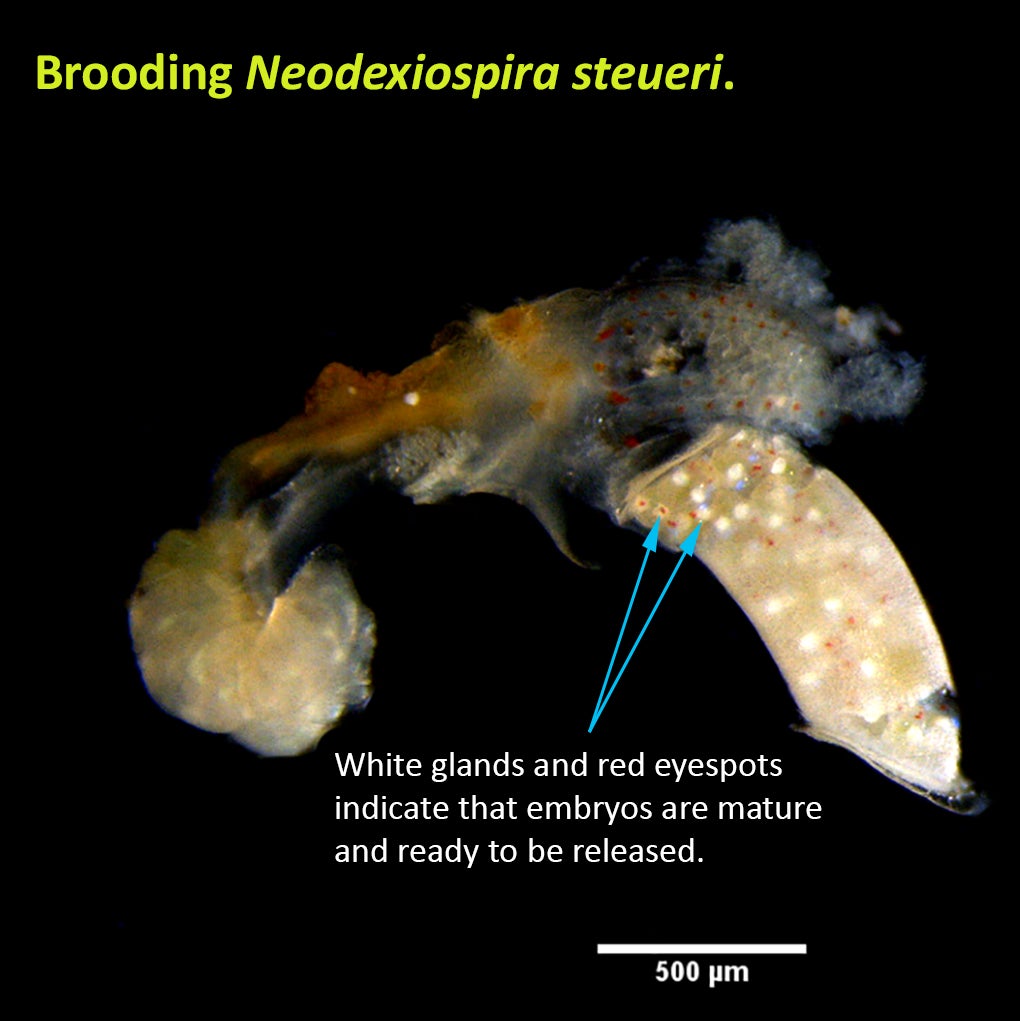
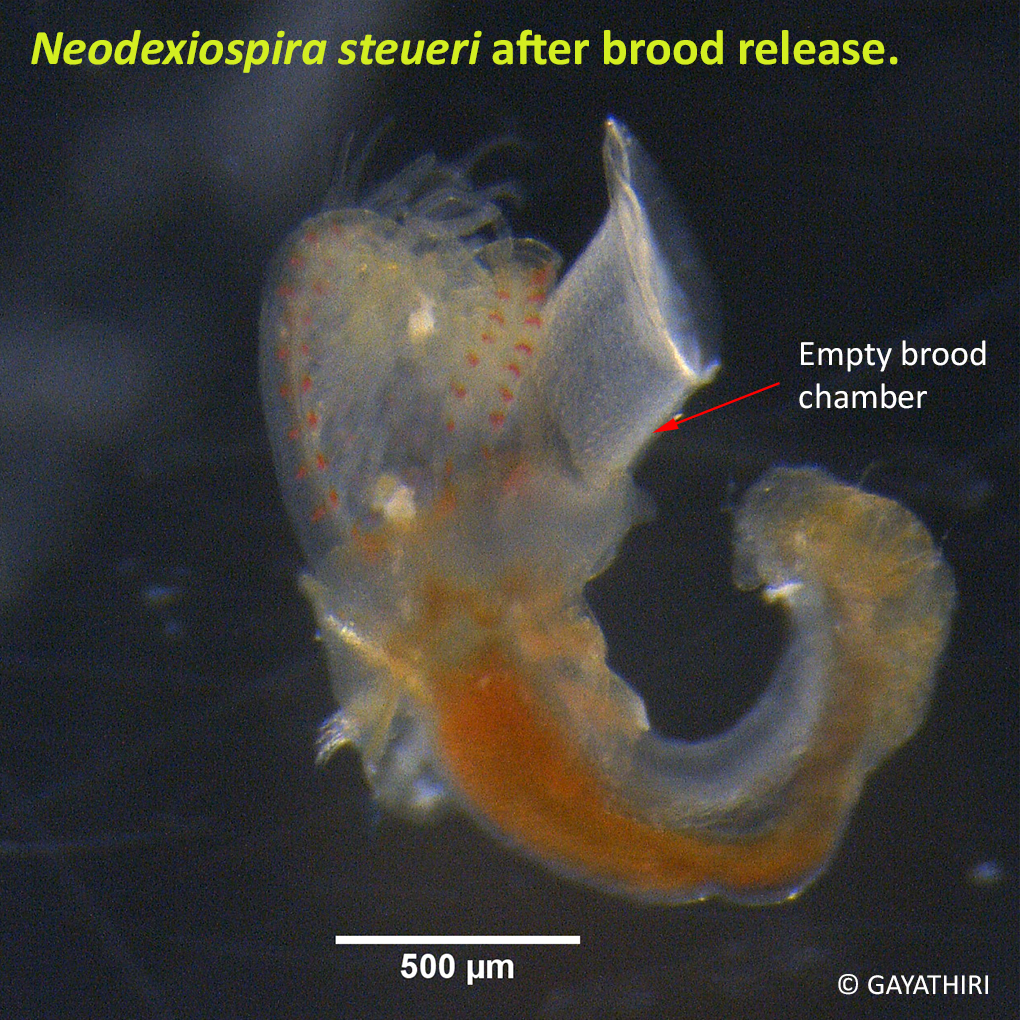
Contributors: Gayathiri D/O Sivananthan and Lim Chin Sing
Acknowledgement: US Office of Naval Research and National Research Foundation
Excited to learn more about polychaetes? Watch this space next week for the last part of the series, focusing on deep sea polychaetes!
Follow Singapore polychaetes research on
Twitter: https://twitter.com/SPolychaetes
Follow us on


